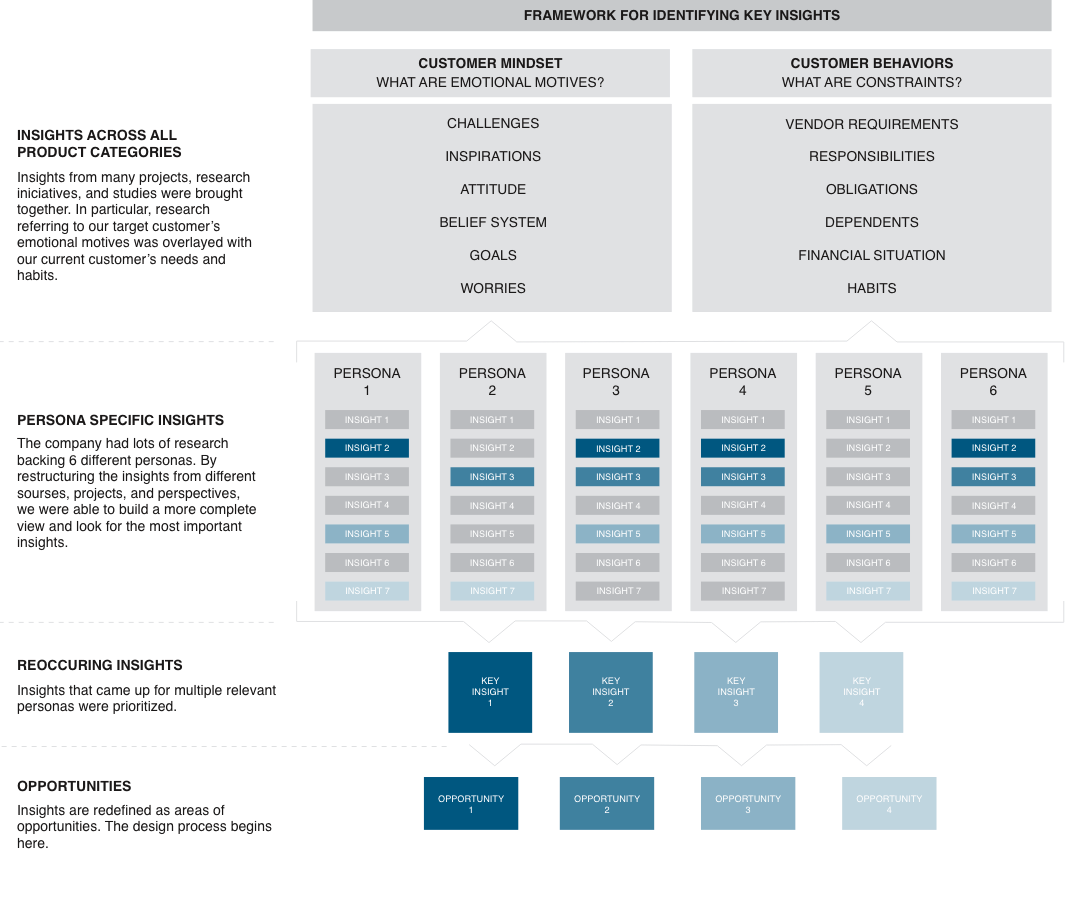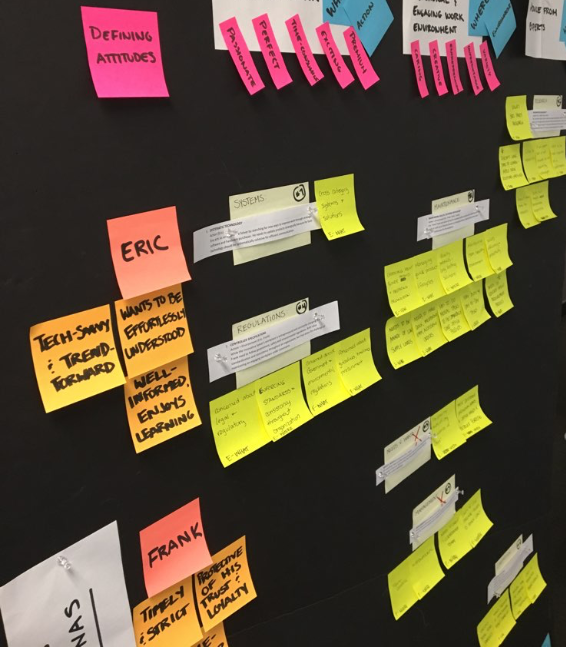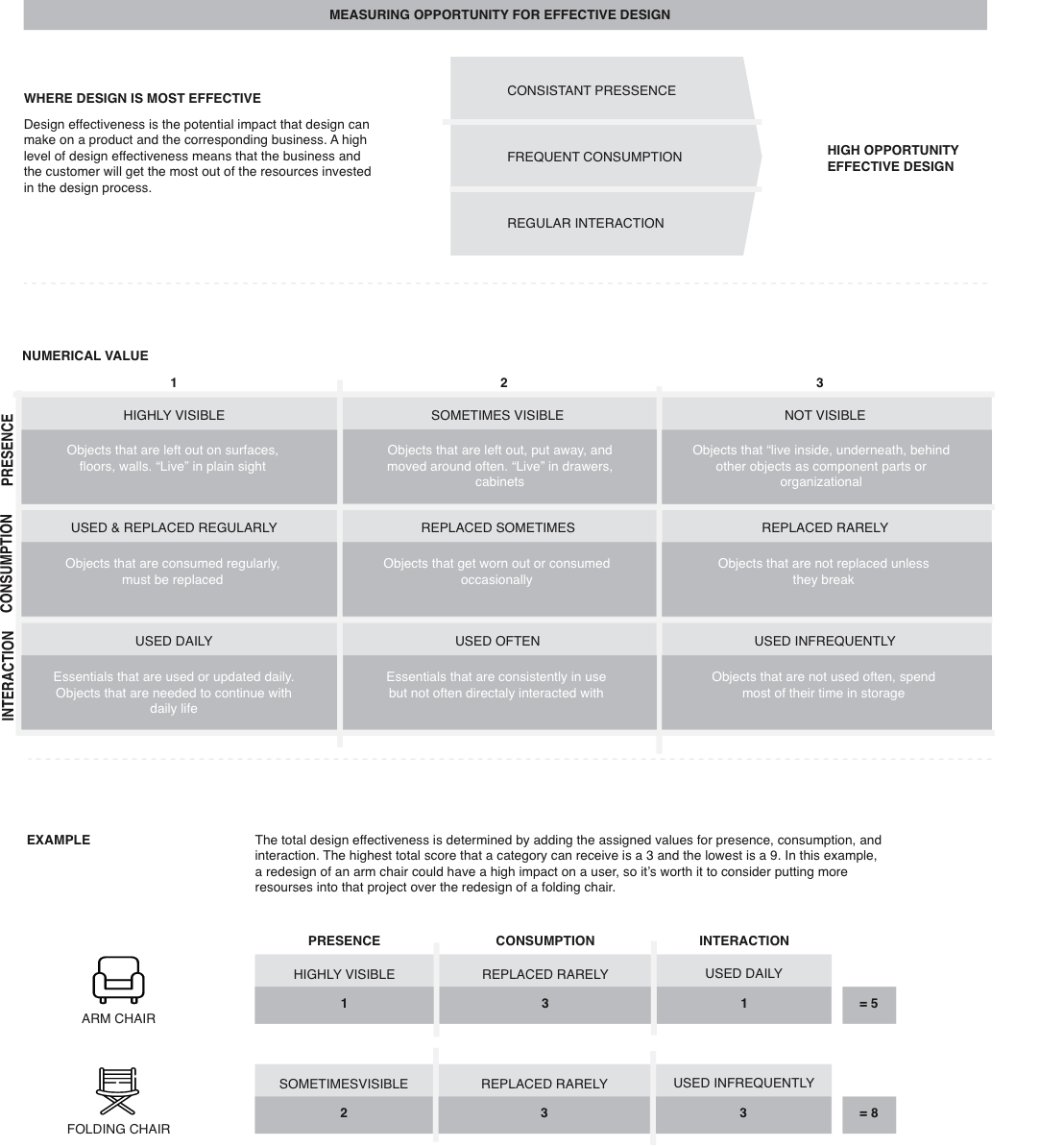CREATING AND INTEGRATING AN INNOVATION STRATEGY
Building a repeatable process to create new, innovative projects that became foundational to the product development process at Staples inc.
During my time at Staples, I had the opportunity to help build a new project structure that would be implemented to release new, user-centered product lines on a recurring basis. The previous heritage assortments were often updated sparingly, or never, and the projects were lead based on merchandising efforts, not user needs or design trends. Within this limited context, innovation simply means making new products for customers. And this was something that the business desperately needed to figure out how to do well in order to stay relevant.
Role
Design strategist
I worked closely with design leadership to create and implement a “design activation” plan which we taught to the other design managers and used to bring more systematic design into the organization.
Outcome
During my time, we used this methodology to extract insights from over 20 product categories in research and line review projects, resulting in over 50 new design projects. The design team grew in both resources and team members to accommodate growing need.
Project Type
Design Strategy Innovation
CREATING A LEAN METHOD FOR INTRODUCING INNOVATION OPPORTUNITIES
As Staples diversified its product lines to create a house of brands model, the design team needed to quickly build a method to validate that the newly proposed opportunities would be relevant to the brand and the customer. The product development lifecycle unfortunately didn’t allow us to do in- depth user testing on every opportunity, and the obvious nature of some of the opportunities rendered some traditional methods of validation obsolete or wasteful. Instead, we came up with a method to preliminary validate opportunities by aligning them with our new brand personas, market trends, and a metric related to design value.


Aligning brand personas from past market research
In order to create alignment within the brand personas the design team reorganized many past user studies from the marketing team in addition to integrating new information from an in-depth study about the future target customer mindset [Fig 2]. We used this data to create profiles for target customers. The alignment of the new product opportunity and the framework for each of our end users would be the benchmark that needed to be passed in order to recommend opportunities for innovation.
Aligning market trends with brand personas
A big opportunity for the product development teams at Staples was understanding trends. The design team helped to organize various efforts to train and guide the teams through why trends are important, where they come from, and what we should do about them. We began a process of analyzing competitor trends, overall lifestyle and workplace trends, and choosing which trends our assortments would participate in.

Measuring Design Value
PRIORITIZING OPPORTUNITIES FOR DESIGN
Throughout this process, we easily came up with a multitude of opportunities where new product development could be valuable to the brands. Since it’s unrealistic to invest so much at one time, we used a method of measuring design value to help guide which new projects would have the most impact with the most reasonable amount of effort [Fig 4]. The products were analyzed based on how prominently they would be in view both when in use and when stored, how often they were replaced, and how often they were used. By assigning numbers to these nebulous values, we were able to rank project opportunities based on how much of a brand impact they could have.

PRESENTING INNOVATION OPPORTUNITIES
At this phase we would take the innovation opportunities and make them visual enough to present to business and leadership teams. This formed the basis for the design recommendation of new product opportunities. The next steps were getting alignment, funding, and buy in to start working on the design project (see Designing a Furniture Brand for an example of one). We met with product teams and leadership to begin discussing which opportunities the business saw potential in, then they worked with our input to assess financial opportunity and ultimately finalize the projects that would go forward.
PERSONAL LEARNINGS
I learned about the importance of communicating the benefits of design in a way that generalists and business leadership can get excited about both through verbal and visual storytelling.
The intent behind the synopsis presented here was bigger than one project, it was a strategy that needed consistent care in order to grow and evolve into something that eventually effected the organization. I learned how to be an advocate in the long term, even when things didn’t go as planned.